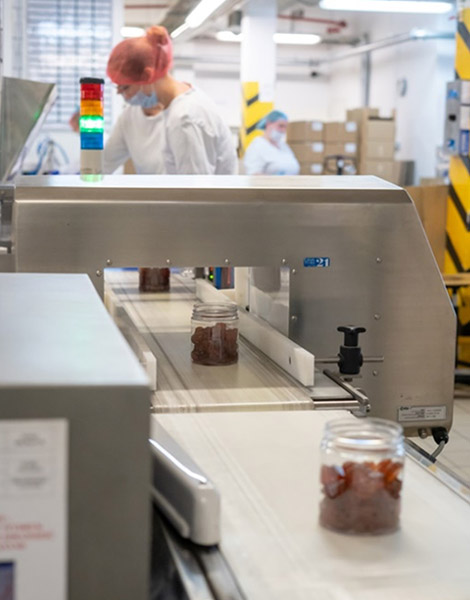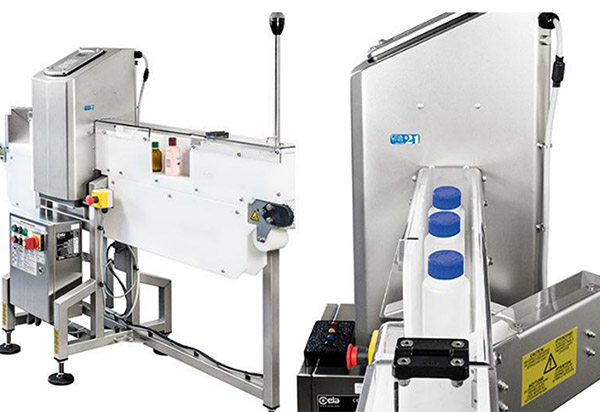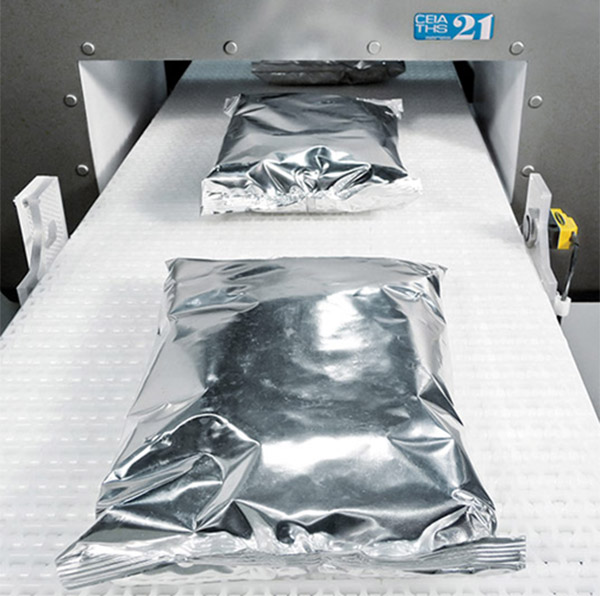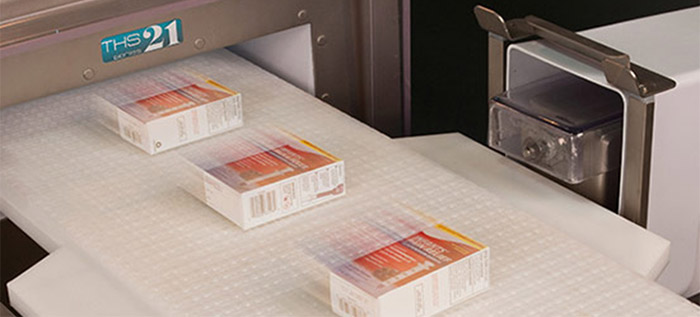The growing market for nutraceuticals and functional foods leads to additional challenges for metal detection which can be solved through the use of multi-spectrum technology.

Nutraceuticals are increasingly becoming a part of the food industry as consumers seek products that offer health benefits beyond basic nutrition. Nutraceuticals are driving collaborations between the food industry and pharmaceutical companies that can facilitate the development of innovative products that combine the expertise of both sectors.
The progressive integration of nutraceuticals into the food industry can be observed in several ways:
Nutraceuticals also often require specific packaging to preserve their potency and stability. The food industry has responded by incorporating specialized packaging technologies, such as barrier packaging, airtight containers, and UV-protective packaging, to maintain the quality and efficacy of nutraceutical products. These packaging options ensure that the bioactive compounds in the products remain intact and protected from external factors that can degrade their effectiveness.
 Overall, metal detectors play a crucial role in food and nutraceutical manufacturing by safeguarding product integrity and consumer health. They help prevent potential hazards associated with metal contaminants, ensuring that the final products meet the required quality standards and regulatory guidelines.
Overall, metal detectors play a crucial role in food and nutraceutical manufacturing by safeguarding product integrity and consumer health. They help prevent potential hazards associated with metal contaminants, ensuring that the final products meet the required quality standards and regulatory guidelines.
The use of metal detectors in nutraceutical manufacturing serves as a critical quality control measure to identify and remove any metallic contaminants that may be present in the products. These contaminants can originate from various sources, such as raw materials, processing equipment, or packaging materials. Metal contaminants can pose serious risks to consumer health if ingested, and their presence must be eliminated or minimized.
There are several types of metal detectors, and each uses a different detection method to operate. In the food industry, metal detectors usually apply the balanced coil method. These metal detectors are equipped with a transmitter coil, which generates an electromagnetic field, and two receiver coils. The receiver coils have an equal but opposite output, creating a balanced state.
When a conductive object passes through the detector, it interrupts the balanced state of the electromagnetic field and causes a signal that is detected by the receiver coils. The electronics unit in the metal detector then analyses this signal, evaluates it, signals a metal detection, and either activates the automatic reject units that separates the contaminated product from the production line or alerts the operator.
There are two main factors that can lead to false positives in metal detection: environmental factors and product factors.
Most food and pharmaceutical manufacturing and packaging lines involve the movement of product via conveyors, and the metal detectors are often installed close to the conveyors and often other electromechanical equipment. The preference today for the use of variable frequency drives, mainly to maximize energy efficiency, means that there is an increased potential for electromagnetic interference across a wide spectrum of frequencies.
Such interference can often lead to disruption of the field of the balanced coils in a typical single-frequency or multi-frequency metal detector, leading to a false detection.
 Some products contain salt, iron, and moisture — each of which can alter the detector’s field and can trigger a false detection. This effect increases with higher inspection frequencies that are typically used to detect smaller particles and can lead to significant levels of wasted product and downtime.
Some products contain salt, iron, and moisture — each of which can alter the detector’s field and can trigger a false detection. This effect increases with higher inspection frequencies that are typically used to detect smaller particles and can lead to significant levels of wasted product and downtime.
In the case of nutraceuticals, the risk of false positives increases, due to the specialized packaging and the fact that many of the supplements used in nutraceuticals contain various types of metallic and conductive additives.
 Types of metal detectors
Types of metal detectorsThere are three main types of metal detector technologies: single-frequency, multi-frequency and multi-spectrum metal detectors.
The majority of metal detectors on the market use only one frequency when inspecting product. The selected operating frequency depends primarily on the product being inspected. This is satisfactory when the product is dry and non-conductive. Single frequency metal detectors have limited abilities to work with different products and are difficult to optimize for varying conditions of temperature, water content, and packaging types.
Using a metal detector that offers more detection frequencies can result in more sensitive metal detection and fewer product effect errors, as well as being able to use the machine on products with differing characteristics.
Multi-frequency metal detectors can only use one of the available operating frequencies at a time, however. The operator may need to switch from one frequency to another when changing products, or in more advanced multi-frequency systems, the metal detector will switch back and forth between two or more frequencies in rapid succession. However, only one frequency (one electromagnetic field) is capable of ever being on at any given time, and to prevent false rejections on more difficult product, reducing the sensitivity typically is still required.

Developed by Italian company CEIA, these metal detectors operate over an entire spectrum of frequencies that are simultaneously analyzed and applied to completely eliminate product effects and interference, allowing for an improved inspection of the product.
Equipped with advanced computer technology and patented algorithms, CEIA’s multi-spectrum metal detectors can not only eliminate false positives, but can ‘learn’ the product being scanned, and perform automated testing to ensure correct detection, minimizing false negatives.
CEIA was founded in 1961 in Turin, Italy – initially to produce electronic components and systems for industrial automation. In 1971 the company began developing metal detectors, their products first gaining recognition in the security industry. They developed advanced walkthrough metal detectors for high-security applications, such as airports, government buildings, and public venues.
CEIA later expanded its metal detector range, developing devices now widely used in applications such as food processing, pharmaceuticals, textiles, plastics, mining, and recycling. CEIA focused on developing metal detectors specifically designed for the unique requirements and challenges of these industries.
CEIA is at the forefront of technological advancements in metal detection. They introduced the world’s only multi-spectrum technology to enhance detection capabilities by simultaneously using multiple frequencies. The CEIA THS/MS21 has unique detection capabilities and extreme sensitivity to magnetic, non-magnetic, and even 316 stainless steel metal contaminants.
The THS/MS21 is suitable for nearly all variations of food and nutraceutical product characteristics — and can detect foreign objects while operating simply, efficiently and at high speed — at the same time, collecting and retaining important production run data. The technology is capable of detecting particles as small as 0.25 mm (depending on the aperture size) including 316 stainless steel, and can be integrated into modern automation systems. Product data can be accessed from anywhere via a cloud service provided by CEIA.